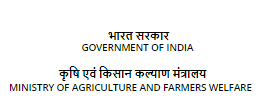An Improved Device for Collection and Measurement of Enteric Methane Emission in Ruminants
Background:
Among the conventional techniques to measure the enteric methane emission by ruminants, one of the widely used techniques developed and recommended for the collection of breath samples is the SF6 technique wherein the SF6 assembly includes a gas collection vessel, halters, and gas chromatographic analysis. A gas collection vessel is one of the most important and integral components used for the collection and accumulation of breath gas samples of the animals to quantify daily enteric CH4 emissions. This method employs a calibrated SF6 source (a permeation tube) pre-inserted into the reticulo-rumen of the participating animal and a lightweight “breath”-collection apparatus (evacuated PVC canister and capillary flow-restrictor) mounted on the animal. The duration of gas collection using SF6 is generally 5-6 days only however, it takes about 12-15 days for the collection of 5-6 successful sample collections. Therefore, only 40-50% of the gas collection is successful, and the remaining 50-60% of the unsuccessful collection is due to blockage of halters, breakage, leakage, blockage of PVC canisters, long-duration for calculation of very limited sample collection which leads to huge time loss, manpower wastage and thereby prolonging the study duration, etc.
Therefore, to overcome the limitations and problems associated with the conventional devices/techniques related to the measurement of the enteric methane emission, an improved device was developed using a PVC canister for collection and measurement of enteric methane emission that can detect the blockage or the leakage at the earliest to identify the problem and change the vessel. Further, the vessel design was modified to make it stronger using supports and other modifications in the design.:
Technology Details:
Keeping the above demerits of the existing assembly in view, we have developed the improvised gas collection vessel under the Outreach Methane Project, by which the leakage and blockage of halters and canisters can be monitored in real-time. The constant monitoring of the gas inflow through the additional component (pressure gauge) in the canister will enable the researchers to immediately replace the halter or canisters as per the blockage or leakage. In doing so, the successful collection can be accomplished within 5-6 days without prolonging the study duration, and it will also minimize the wastage of feed, time, research consumables, etc. In addition, the existing gas collection vessels due to the fixing of the end cap at the outer side of both the arms are prone to the physical breakage by the animals. In the modified vessel, we have fixed the cap inner side on both the arms end, which minimizes the breakage by the animals. Moreover, an additional inner support piece is placed inside of the connecting elbow joints which also prevents the leakage from the canister. The modifications in gas collection vessels substantially improved and validated in the cattle and buffaloes for detecting the leakage, blockage, and prevention of breakage.


